If you as an owner of an online business do you want to increase traffic and conversions? How to create a winning marketing strategy for Ecommerce at a time when e-commerce is exploding?
But what are the big steps?
To answer all of these questions, that's why today we want to help you find out your marketing strategy. In our article, we'll break down everything you need via what definition of e-commerce marketing strategy? Steps to Building Your E-commerce Marketing Foundation, and more things you should know to increase your online business.
Let's delve into it!!
What is Marketing Strategy for E-commerce?
Marketing strategy for E-commerce is a method of promoting a company that sells its products or services via the Internet. The goals of ecommerce marketing are to drive traffic to the online store, convert visitors into paying customers, and build loyalty after a purchase.
To do this, the company must implement effective communication actions and campaigns based on a set of appropriate solutions, whether natural referencing (SEO), paid advertising, promotion via social media. , emailing, push notification…
Communication channels, such as social media, are of crucial importance for e-commerce marketing.
For example, businesses can leverage Instagram or Facebook to promote their products with relevant images, videos and links with a solid e-commerce marketing plan, it's able to:
- Strengthen your brand awareness,
- Attract more traffic to your website,
- Build customer loyalty,
- Conquer new customers,
- Increase your turnover,
- And grow your business.
In addition, automated and personalized email marketing can be used to remind a customer of an abandoned cart or to send exclusive offers to a loyal customer base.
Visit our services: Best website developers Melbourne
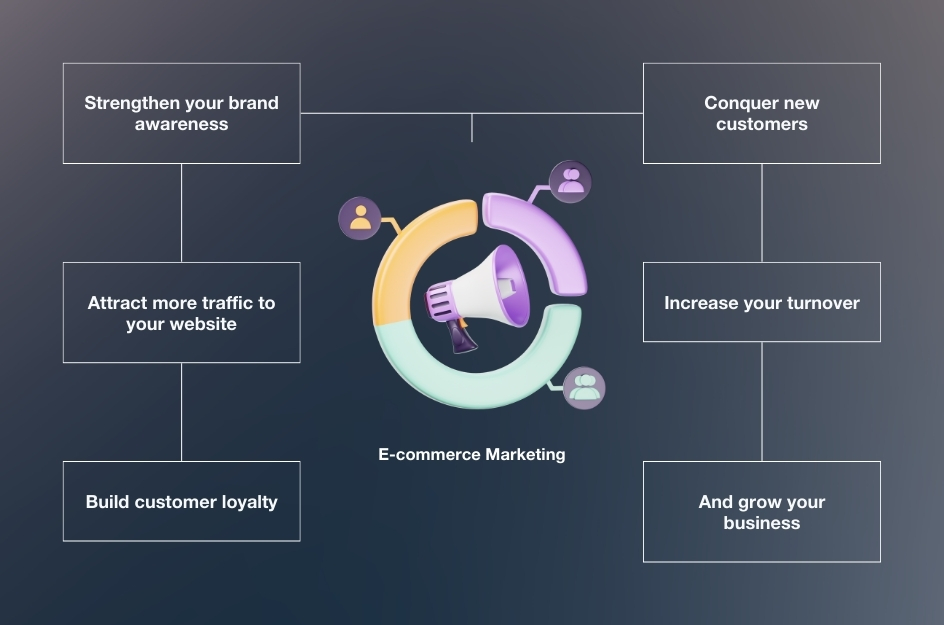
E-commerce Marketing vs. E-commerce Advertising:
While e-commerce advertising focuses on paid promotions to drive immediate sales, e-commerce and marketing takes a holistic approach, encompassing organic and paid tactics to build brand awareness, engage customers, and drive long-term growth.
| Feature | E-commerce Marketing | E-commerce Advertising |
| Cost | Primarily organic, some paid elements | Paid strategy |
| Focus | Long-term brand building, organic traffic | Immediate traffic & conversions |
| Control | More control over content & messaging | Less control over ad platform algorithms |
| Measurability | May take time to see results, requires tracking various metrics | Provides quicker results, easier to track ROI |
Understanding Your Target Audience
Understand your target audience is the key to a successful marketing strategy. You can analyze user behavior, preferences, and demographics to tailor your approach effectively.
1. Diversity:
Always make sure your sample is diverse. Ensuring the diversity of your sample can be difficult in some cases because it is difficult to reach your target audience or certain parts of the population or convince them to participate in the survey.
For your sample to truly represent the population, it must be diverse. A sample that is not diverse and representative of the entire population has serious consequences for your research.
2. Transparency
The structure and size of your population depend on different factors. You should discuss these constraints to maintain a level of transparency about your sample selection procedures. You must be transparent so that the results of your investigation can be considered in the right perspective.
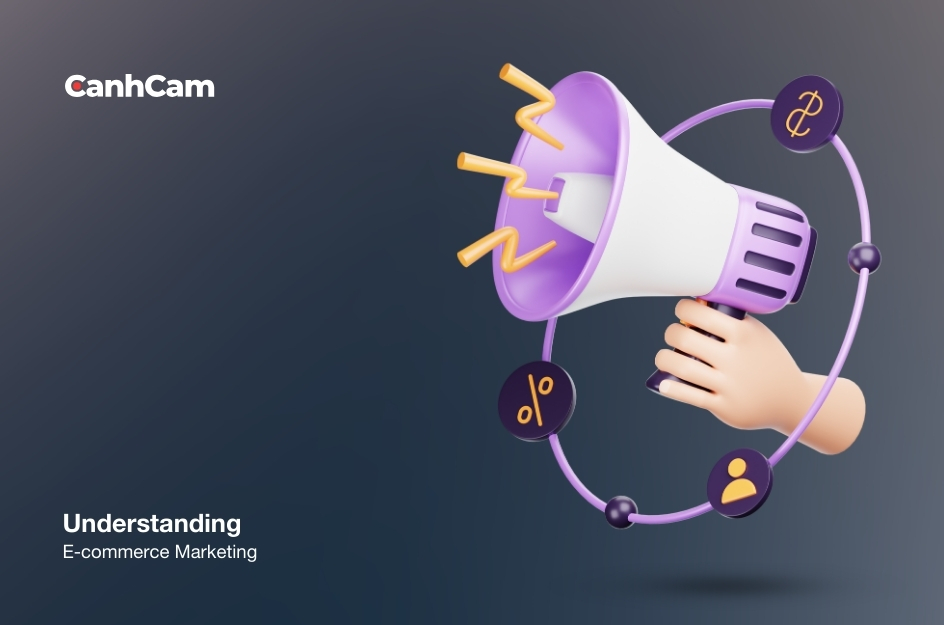
3. Consistency
You must understand your population well and test the consistency of your sample before launching the survey.
This is extremely important for research studies that track changes across space and time, particularly when you need to be sure that any variation you notice in your research data reflects a similar trend in samples that are comparable and consistent.
4. Setting SMART Goals & KPIs:
To measure the effectiveness of your e-commerce marketing efforts, it's crucial to set SMART goals (Specific, Measurable, Achievable, Relevant, Time-bound) and identify key performance indicators (KPIs) aligned with your business objectives.
Read more: How to Start an Ecommerce Business in Australia: Complete Guide 2024
Core E-commerce Marketing Channels
E-commerce thrives on many marketing channels: SEO (Search Engine Optimization) drives traffic, Social Media builds brand awareness and engagement, and Email Marketing nurtures leads and converts them into sales, etc. To help you better view core ecommerce marketing channels, see the following table:
| Channel | Description |
| Search Engine Optimization (SEO) | Optimizes website content and structure to improve organic search ranking and visibility on search engines like Google, driving traffic from potential customers searching for relevant products or services. |
| Content Marketing | Creates and distributes valuable, informative, and engaging content (e.g., blog posts, infographics, videos) that attracts and educates a target audience, ultimately converting them into loyal customers. |
| Email Marketing | Sends targeted and personalized email campaigns to a specific subscriber list to promote products, services, or events. This allows for nurturing leads, building relationships, and driving sales. |
| Affiliate Marketing | Partners with other companies or influencers to promote their products or services on your platform (website, social media) in exchange for a commission on sales generated through unique referral links. |
| Display Advertising | Places visually appealing advertisements, such as banners or rich media (video ads, interactive elements), on relevant websites frequented by your target audience. This raises brand awareness and drives traffic to your e-commerce store. |
| Online Public Relations (PR) | Builds and maintains positive relationships with online media publications and influencers to secure favorable brand mentions, reviews, and coverage. This strategy enhances brand awareness, credibility, and trust. |
| Podcast Marketing | Creates, distributes, and promotes audio content (podcasts) to engage and grow a target audience. Podcasts can inform, entertain, and educate listeners, fostering brand loyalty and potentially generating revenue through advertising or product placements within the podcast itself. |
Optimizing & Measuring Your Efforts
It's important to keep refining and checking how well your efforts are doing in anything you're working on. By adapting your strategies and seeing what works best, you can make sure you're using your resources wisely and getting the most out of what you're doing.
Data Analysis for Online Sellers
Make sure to use strong analytics tools to follow your website traffic, check how many visitors actually buy something, and understand how customers behave. This helps you make decisions based on data and keep improving your marketing plans all the time.
Essential Tips for Better Websites
Make your online store better for getting sales by making it easier for users, simplifying the checkout process, and ensuring it works well on mobile devices since more people are shopping on their phones these days.
Testing and Adapting Your Campaigns
Try out different marketing ideas, messages, and designs using A/B testing to see what works best. This way, you can fine-tune your campaigns and get the most out of them.
Boosting Your Website's Visibility
Use SEO skills like finding the right keywords, optimizing your pages, and building links to help your site show up more in search results. This brings in more organic traffic and more chances to make sales.
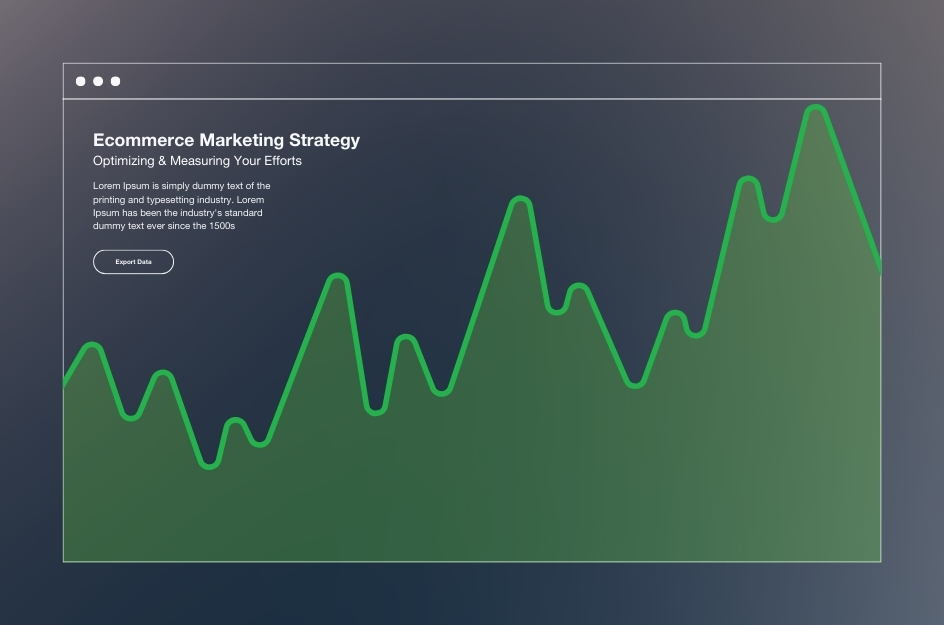
Checking How Your Emails Perform
Look at how well your email campaigns are doing by keeping an eye on things like how many people open them, click on links, and end up buying something. This helps you figure out what needs improvement and tweak your messages to connect better with your audience.
Social Media Stats and Interaction
Keep an eye on social media numbers like engagement, how many people see your posts, and who your audience is. Use this info to tailor your content and engage better with your followers.
Analyzing Paid Ads Effectiveness
See if your paid ads are worth the money by tracking metrics like how much each click costs, the rate of turning clicks into sales, and how much it costs to get a new customer. Adjust your ad strategy based on this info to get the most out of your ad budget.
Listening to Customer Feedback
Get feedback and reviews from customers to learn what they like, what they don't, and where you can improve. Use this feedback to make your products better and give customers a great experience.
Always Getting Better
Create a work environment where everyone is always looking for ways to improve. Encourage team members to regularly look at data, share what they find, and work together to make things better and grow.
Tracking Performance and Goals
Make detailed reports that track how well you're doing across all your marketing efforts. Use these reports to see how close you are to your goals, spot trends, and make smart decisions based on data for future success.
Advanced E-commerce Marketing Strategies
Advanced e-commerce marketing strategies drive growth through personalized automation and data-driven decisions, fostering sustainable success in the digital marketplace. Here, we present professional growth strategies:
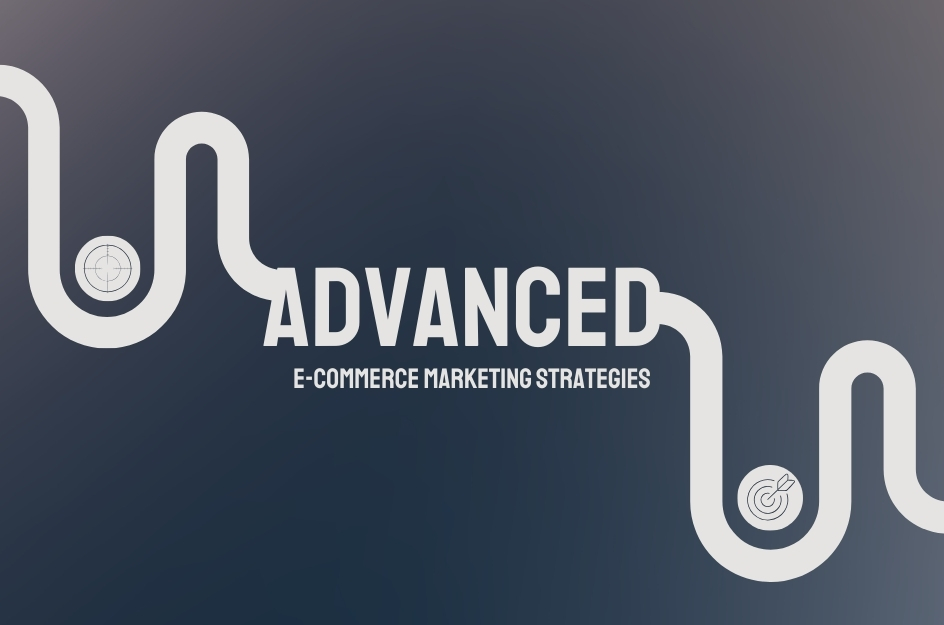
Advanced strategies like influencer marketing, retargeting ads, and user-generated content can personalize the customer journey and boost conversions.
Pay-per-Click (PPC) Advertising:
The benefits of PPC advertising for e-commerce, include increased visibility, targeted reach, and measurable ROI, through platforms like Google Ads and Bing Ads.
For an example:
Picture this: You've got an online shop selling sporty shirts. You decide to kick off a Google Ads campaign, aiming at folks looking for men's athletic shirts. With a catchy ad and a landing page showing off your cool shirts, your ad could snag a prime spot in search results.
If someone clicks on your ad, checks out your range of athletic shirts, they're likely to spot something they like. Sure, that click might set you back $200 via Google Ads, but if it ends up in a sale, it's money well spent.
Retargeting:
Retargeting campaigns help recapture lost leads and left carts by serving targeted ads to users who have previously interacted with your website or products, increasing conversion rates and maximizing ROI.
We will take the example above for further:
Someone checks out some cool athletic shirts on your site but doesn't buy anything. With retargeting, you can show them ads for those same shirts on other sites they visit.
Studies say these retargeting campaigns work really well, with some even getting a click rate of 25%. By nudging the user about those shirts they liked, you up the odds of them coming back to your site and buying something. That means better conversion rates and more bang for your buck in the end.
Influencer Marketing:
Collaborate with relevant influencers to reach new audiences, build trust, and drive sales through authentic endorsements and engaging content tailored to your target market.
Customer Loyalty Programs:
Foster customer retention and repeat purchases by implementing loyalty programs, rewarding loyal customers with exclusive perks, discounts, and incentives for their continued support.
User Experience Optimization (UXO) for E-commerce Marketing
- Visual Appeal: Enhance user engagement and information retention with high-quality images, infographics, and videos that complement your content and reinforce key messaging.
- Mobile-Friendliness: Make sure your website works well on phones so that people shopping on mobile have a good experience too. It's important to make everything smooth for users no matter what device they're using.
- Regular Updates: Keep your content fresh by always adding new stuff that's up-to-date with what's going on. This way, you'll always be on top of things and keep doing well.
Actionable Resources & Going Beyond
Check out real success stories in ecommerce marketing for some inspiration. See how smart strategies lead to tangible results, helping you shape your own game plan.
Stay in the loop with the latest trends, top practices, and in-depth guides on our ecommerce marketing blog and resource hub.
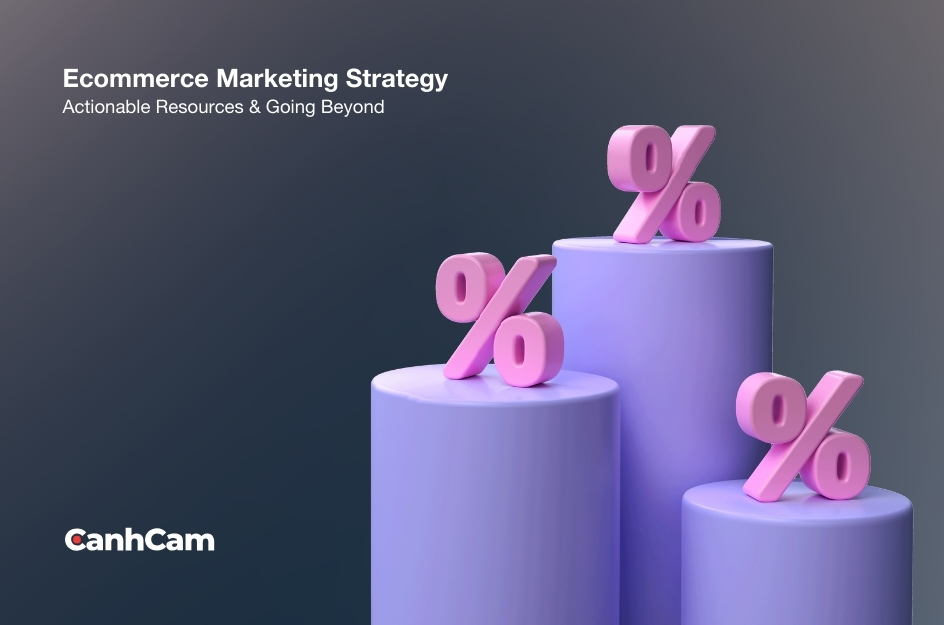
Get insider insights and attend webinars with industry pros to pick up practical tips that can supercharge your ecommerce marketing game.
Take part in hands-on workshops and training sessions aimed at boosting your skills in SEO, social media marketing, email campaigns, and more.
Connect with fellow ecommerce experts, swap stories, and brainstorm ideas at our community forums and networking events.
Conclusion
Crafting a winning e-commerce marketing strategy requires careful planning, execution, and optimization across various channels. By leveraging the insights and resources provided in this comprehensive guide, you can navigate the complexities of e-commerce marketing with confidence, driving sustainable growth and maximizing your online sales potential.
E-commerce Marketing FAQs:
1. How much should I budget for e-commerce marketing?
There's no one-size-fits-all answer, but budgeting typically falls between 7-10% of your gross sales revenue. However, it can vary depending on your industry, business goals, and chosen marketing channels.
The key is to start with a defined budget and track your return on investment (ROI) to optimize your spending.
2. How can I make sure my e-commerce website is converting visitors into sales?
Website optimization is crucial! Focus on user experience (UX) by ensuring your website is easy to navigate and mobile-friendly. Optimize product pages with clear descriptions, high-quality images, and strong calls to action (CTAs).
Consider offering free shipping or discounts to incentivize purchases.
3. I'm on a tight budget. Are there any free or low-cost e-commerce marketing strategies?
Absolutely! Leverage social media platforms like Instagram and Facebook to connect with your target audience organically.
Content marketing is another powerful tool – create informative blog posts or product guides to establish yourself as an industry expert and attract potential customers.
4. How can I track the success of my e-commerce marketing campaigns?
E-commerce analytics tools are your friends! Use analytics platforms like Google Analytics to track website traffic, conversion rates, and customer behavior. This data allows you to measure the effectiveness of your campaigns and identify areas for improvement.
5. What are the biggest mistakes people make in e-commerce marketing?
Many businesses neglect the importance of mobile optimization, leading to a poor user experience on smartphones. Others fail to target the right audience with their marketing efforts, resulting in wasted resources. Remember, data-driven decision making and a focus on customer needs are key to success!

